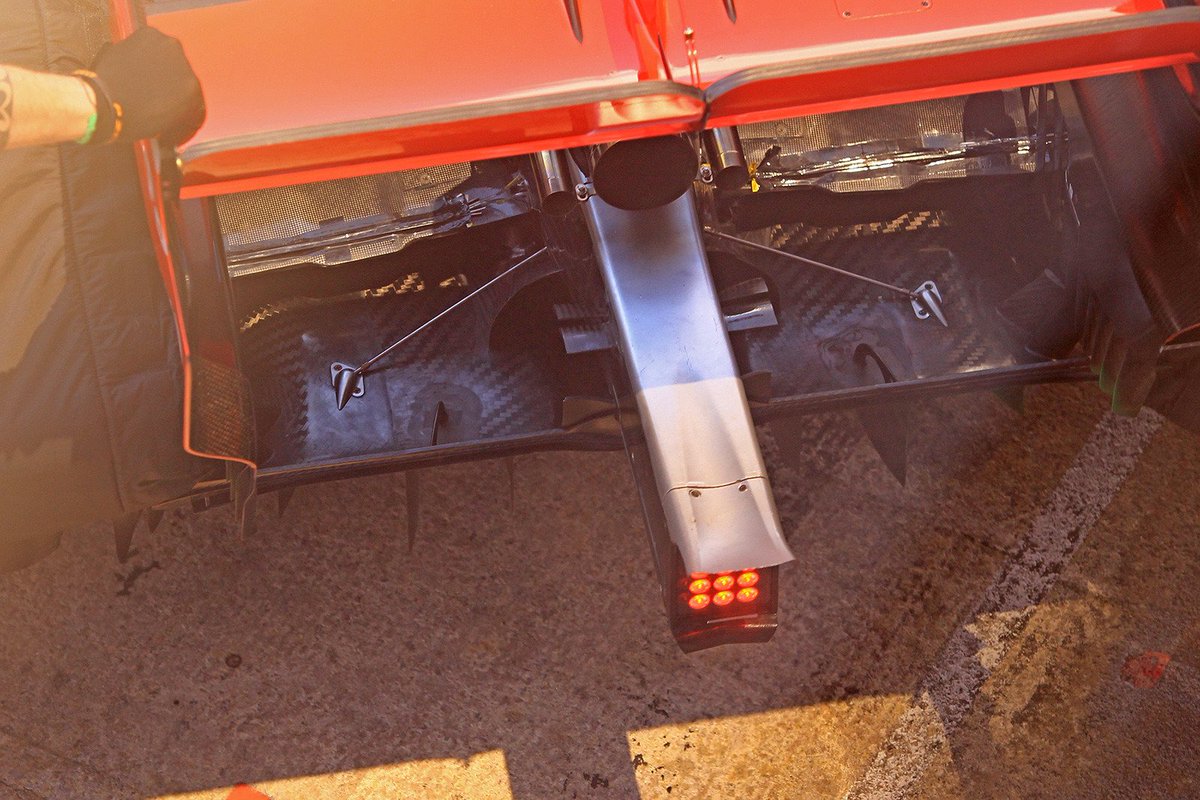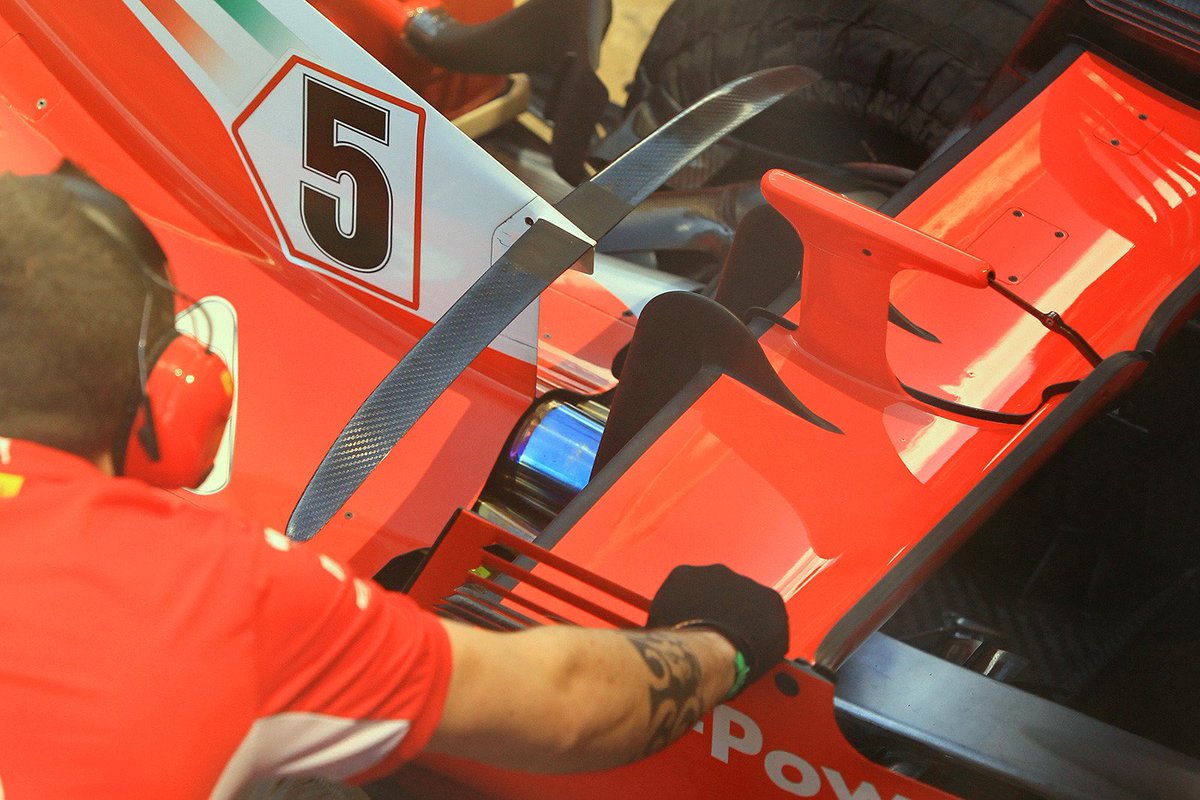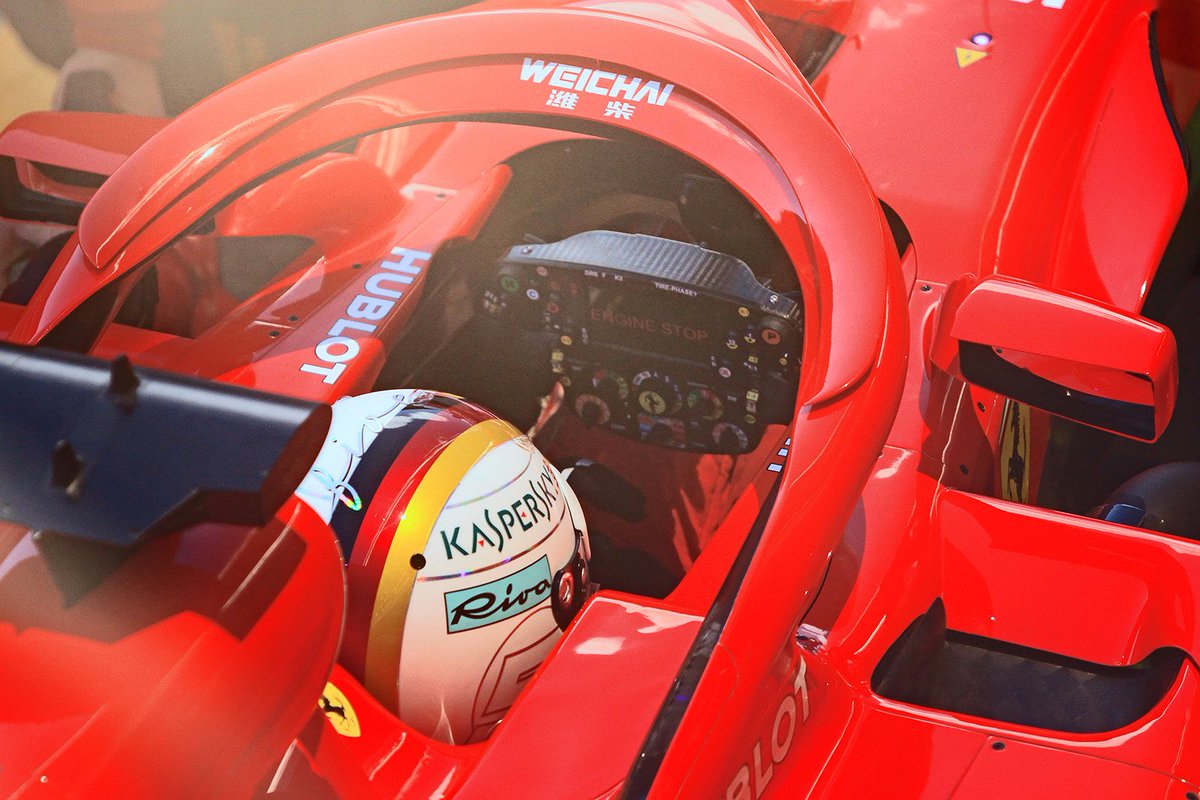- Login or Register
No account yet? Sign up
I agree, and I'll take this one step further - I believe that the mirrors may indeed help feed the top inlets, but only at low speeds, to help increase cooling under these conditions (remember how small the inlets are when looking from the front - the pressure delta inside the side pods decreases with speed, and could reach a critical level at lower speeds, and this is a rather complex solution for that). Since the slots around the mirror are quite small, the air will eventually "stall" (it will continue to flow, but will be saturated), and its functionality will deem the air flow improvement.George-Jung wrote: ↑04 Mar 2018, 22:19If these mirrors are designed to reduce drag- than automatically it will have a positive effect on the top sidepod inlet?
So win-win?

But this is a solid mirror with no aero fairings, and you're implying that the same exact flow effect will result from the flow-through design with additional fairings, which is therefore wrong, or they wouldn't have bothered.Just_a_fan wrote: ↑05 Mar 2018, 14:28The Ferrari's Top Entry Radiator Duct (TERD) alters the airflow over the sidepod and hence to the rear wing (and the top of the diffuser, to a degree). Most teams run devices on top of the sidepod (e.g. a wing-like structure /and/or VGs) to help air flow over the sidepod without separating - especially at the leading edge where the flow is being worked hard. The TERD prevents this system from being used for obvious reasons.
Normally, the mirrors will affect flow behind them to a degree - quite marked in some cases. See here how the mirror generates a vortex :https://www.totalsimulation.co.uk/wp-co ... 68x389.png
That vortex wouldn't help the TERD to entrain air in to the sidepod. So by bringing air through the mirror, Ferrari weaken the downstream effect of the mirror. The result is cleaner flow to the TERD as well as a minor reduction in drag from the mirror. The TERD benefits and the rear wing/diffuser upper surface both benefit too.
The idea that the mirror turns air in to the TERD is nonsensical when one looks at how much the flow would need to be turned.
No, I'm not implying that at all. I'm saying that the mirror affects airflow over the sidepod. The TERD affects airflow over the sidepod. The usual structures used by teams to control flow over the sidepod are not available to Ferrari because of the TERD. Both the TERD and mirror have obviously, therefore, been designed to limit the effect that they have over that flow and thus limit any problematic flow structures reaching the rear wing / diffuser upper surface.
Yes, fair point. I guess this is the difference between this and the Red Bull blown beam wing in 2012 - that was linked to DRS so immediately disabled when you hit the brakes.PhillipM wrote: ↑04 Mar 2018, 16:48I really can't see that, it would leave the rear wing blown under braking at the end of the straight, you'd lose far more time with lack of grip and instability there than you'd ever get close to gaining from the straightline speed. I also doubt you'd have the pressure/flow available to blow the rear wing after all the turns through the mirror mounts, etc.
Sorry, but those can't be compared
If you would like, I can run some CFD simulations with approximate geometry of the wing mirror. Before that, we could discuss the simplification of model in terms of upstream and downstream bodywork we chose to neglect as something without influence on major flow structures around and trough mirror fairing. Honestly, I am not convinced they choke at any speed, just like wings don't. But we can check, if not 100% accurate, at least more accurate than theoretical discussion
Alright, but the TERD actually improves air flow over the side pod by eliminating the boundary layer over its width, reducing the effective length over the side pod. And yes, I do agree that the change is primarily there to help control air flow over the side pod, especially at normal speeds. BUT, the down-turned lip on the top of the mirror sends a different message to me, and that is what I want to find out.Just_a_fan wrote: ↑05 Mar 2018, 14:55No, I'm not implying that at all. I'm saying that the mirror affects airflow over the sidepod. The TERD affects airflow over the sidepod. The usual structures used by teams to control flow over the sidepod are not available to Ferrari because of the TERD. Both the TERD and mirror have obviously, therefore, been designed to limit the effect that they have over that flow and thus limit any problematic flow structures reaching the rear wing / diffuser upper surface.
Airflow in to the radiators is not the problem being solved here, quality of flow to the rear wing / diffuser upper surface is.
No, no... you misunderstood what I wanted to say.Vanja #66 wrote: ↑05 Mar 2018, 20:19Sorry, but those can't be comparedCompletely different effects of fluid mechanics govern the airflow through radiator core and mirror glass is a solid material, no flow trough it. Even in terms of inlet/outlet sizes (from pictures, I am 99% certain mirror fairing has convergent channels, and radiator intakes are divergent, like diffusers) these are, from the pictures I can see, incomparable.





